The choice between 35 and 37-inch tires for your truck, although a matter of personal taste, is not as straightforward as you might think.
Regardless of whether they’re 35s or 37s, upgrading your tires will dramatically improve your 4×4’s performance and aesthetics, but there are compromises that you should know of.
Going from 31″ to 33″ doesn’t seem like a massive step up, but the same cannot be said about 35″ to 37″; the difference is stark and quite noticeable. Plus, there’s quite a bit of re-engineering involved in the case of 35s and 37s.
Should you take the plunge and run 35 tires, or go one step further and install 37s? In this article, we’ll cover everything you need to know.
35 vs 37 Tires: Does Bigger Mean Better?
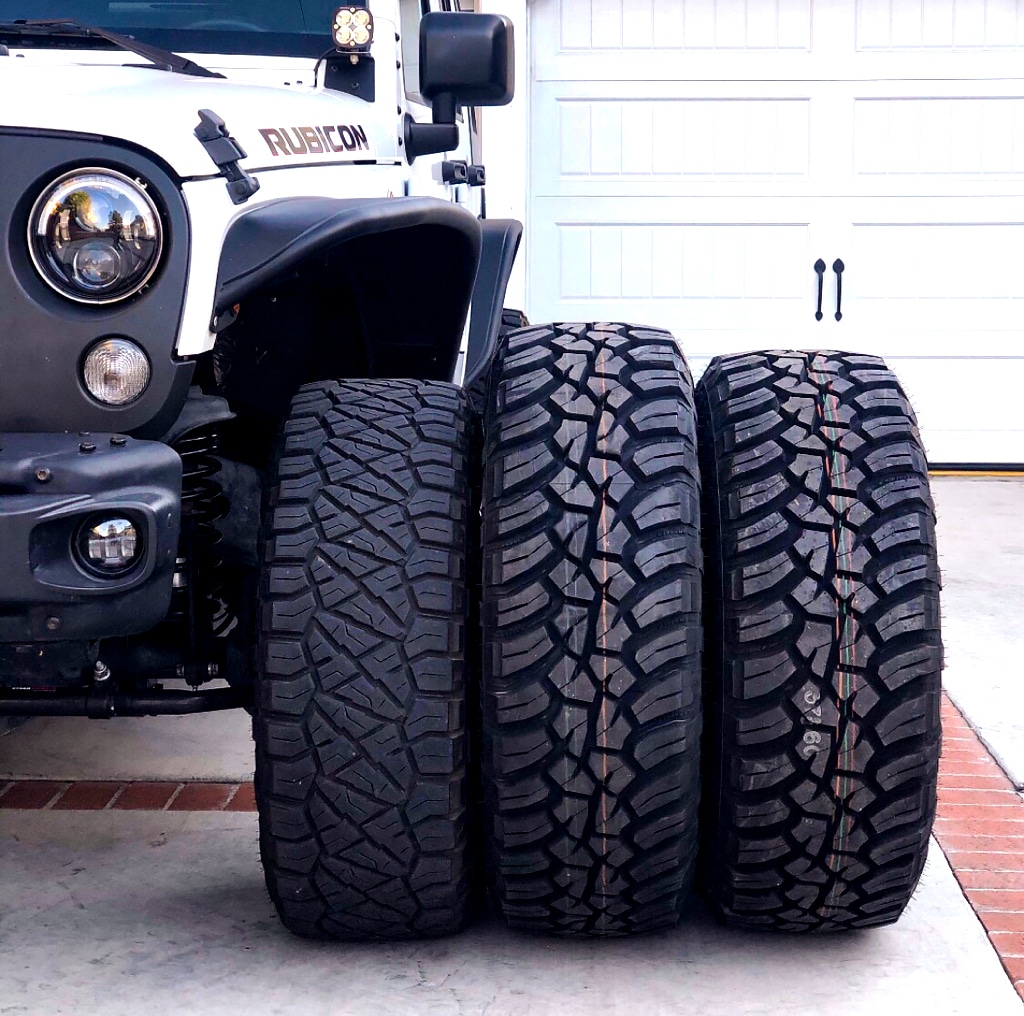
For those not in the know, the numbers 35 and 37 refer to tire diameter measured in inches.
It’s worth noting that 35-inch tires will measure anywhere between 34.5 and 34.9 inches, depending on the make. Additionally, the height may drop by an inch or more after installation, since the tires will compress under load.
Simply swapping a bigger tire may not be the answer to all your problems. When it comes to tires, bigger does not necessarily translate to better.
For example, when swapping a 35 or 37-inch tire, you’re compromising on on-road performance, fuel economy, and weight, among other things.

Sure, it may look cool, which, let’s be honest, is the reason why most people switch to bigger tires. However, these tires are designed specifically for off-road use.
You should only install them if you’re willing to sacrifice on-road handling performance. The trade-offs, however, are worth every penny, especially if you’re serious about the off-road hobby.
Now comes the question, what is the difference between 35 and 37 tires? Which size should you choose? Here’s a quick breakdown of both tires based on aesthetics, off-road performance, ride comfort, and more.
35s vs 37s: What Size Should You Go For?
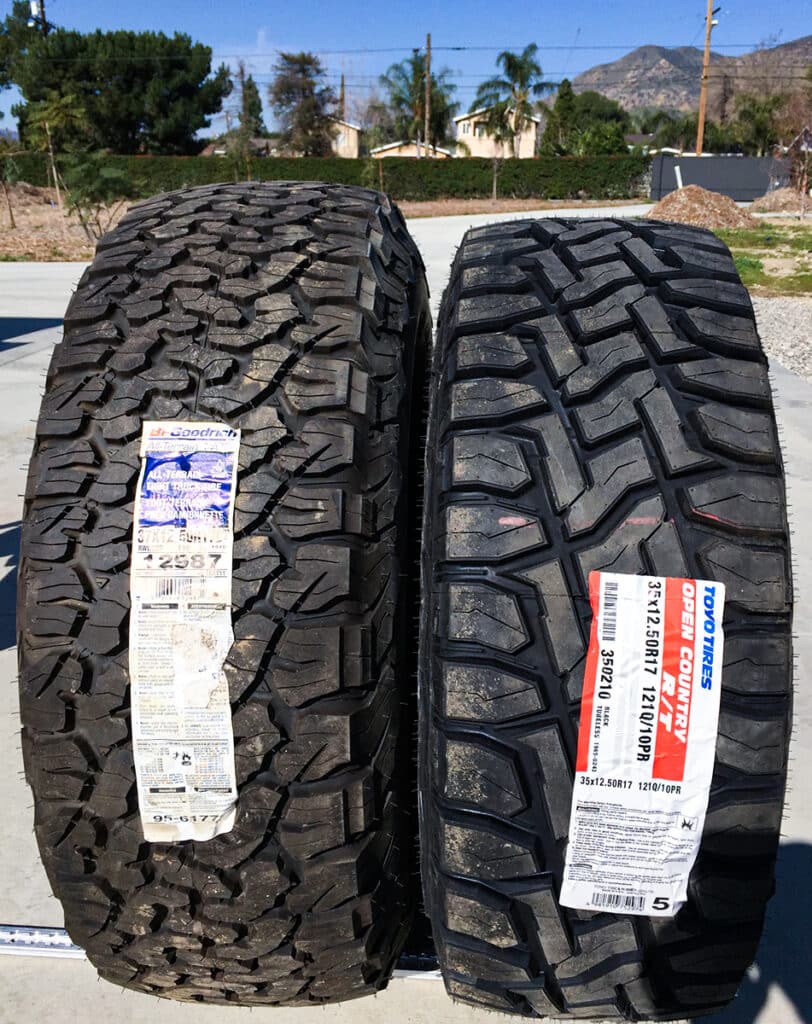
There’s no arguing that 37-inch tires look the most badass among the two. That doesn’t discount the 35-inch in any way, though.
Both tires look impressive, but it’s the 37s that pop, especially if you want to show off your lift kit, suspension, and other accessories.
Off-road performance is noticeably better on the 37s, as these will increase ground clearance and have larger tread patterns. In case you’re wondering about the legality of 37-inch tires, note that they’re perfectly legal.
Bigger sidewalls and tire profiles will make for a relatively easier off-roading experience, at least in terms of grip, traction, and impact.
Comparing ride comfort between 35 and 37 tires is not that simple. While 35s are usually advised for daily driving, some argue that the 37s offer better ride quality, owing to their larger sidewalls.

However, it all depends on the load rating and tire pressure. For example, an E-rated 37 will ride a lot harder than a C-rated 37.
Also, an aired-down 37 will offer a smoother ride than a pumped-up 35. The impression that the 37s offer better ride comfort is rooted in the idea that they allow for substantially lower tire pressures for the truck’s weight in contrast to the 35s.
37-inch tires are heavier than 35s and feel relatively sluggish. Owners have reported a noticeable impact on braking performance when using 37-inch tires.
Additionally, tire noise is worse on 37s than 35s, as is on-road handling, especially at highway speeds. Also, 37s have more rolling resistance which will negatively impact fuel economy. All these automatically make the 35s a better choice for daily use.
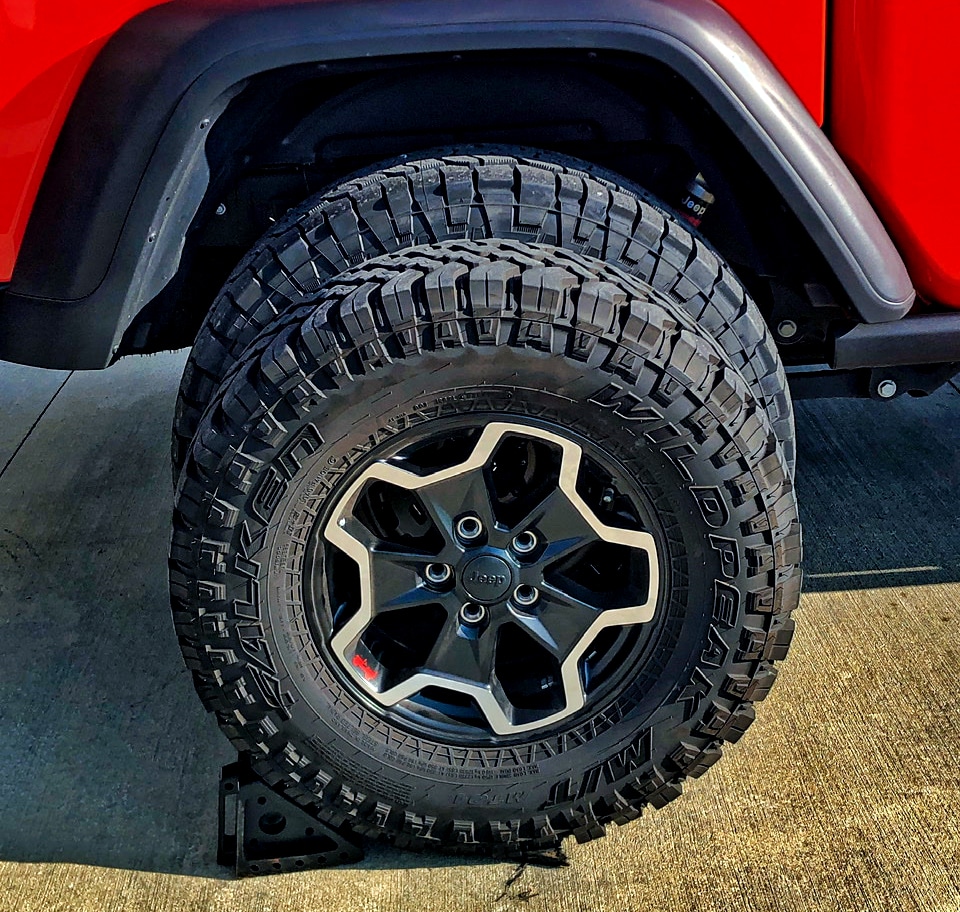
Re-gearing is something else you want to consider, not to mention the cost. 37s cost a lot more than 35-inch tires. Add to that the extra modifications, and you’re likely to spend a significant amount of money to get that additional two inches.
Pros and Cons Of 37-inch Tires
You’ll get the most out of 37s if you’re going to use them for their intended purpose, which is overlanding.
That said, there’s nothing wrong with installing them purely for aesthetic purposes. Here are the pros and cons of 37-inch tires.
Pros
- Looks badass
- Improved off-road performance
- Great for enhancing vehicle stance
- Relatively softer ride
Cons
- Impacts fuel economy
- Heavy
- Pricier to set up, including lift
- Requires re-gearing
- Increased road noise
Pros and Cons Of 35-inch Tires
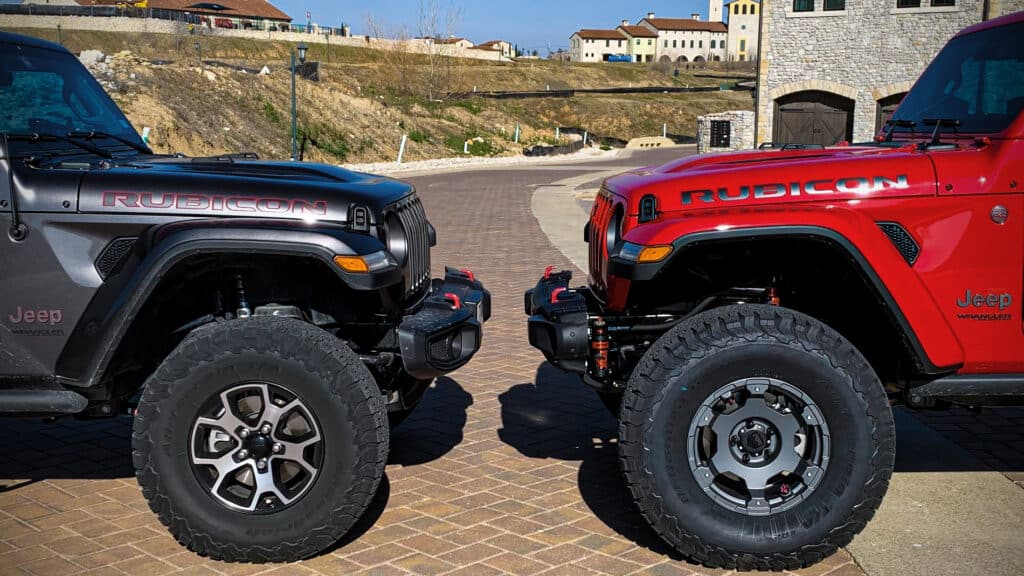
We recommend 35s for daily driven trucks and SUVs. Going through the pros and cons of 35-inch tires will clarify why that’s the case:
Pros
- Looks great
- Better for daily use
- More affordable than 37s
- Relatively less impact on fuel economy
- Lighter
- Works with a small lift
- Less road noise
Cons
- Not as good at off-roading as 37s
- “Skateboard” look
- Relatively harsher ride
- Requires re-gearing but to a lesser extent
Why Is Re-gearing Important on 35 and 37 Tires?
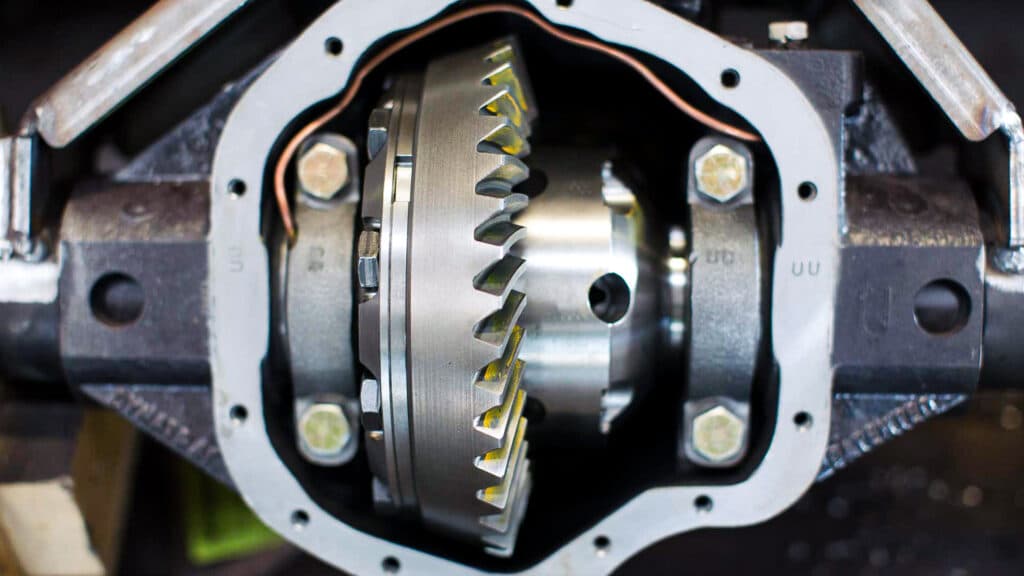
There’s more to this exercise than just uprating tire sizes. The average truck is factory-fitted with components that aren’t designed to handle 35 or 37-inch tires.
These tires put more stress on the axle assembly, so you need to make some modifications to handle the extra load.
That’s where re-gearing comes in. Re-gearing involves altering the truck’s torque setting by upgrading the ring and pinion gears to a different ratio. The bigger your tire size, the more important it is to upgrade the ring and pinion setup.
You’ll have to overhaul the steering components too, as 35 and 37s can wear the factory components pretty quickly. The last thing you want when overlanding is steering and driveline issues.
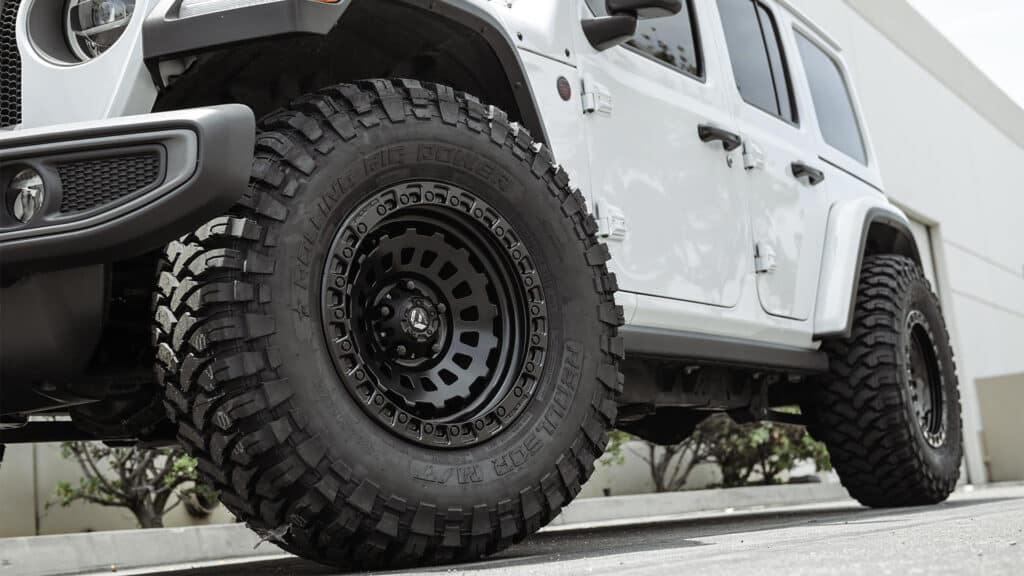
Re-calibrating the speedometer is another thing worth looking at. Also, it’s entirely possible that the settings you’ve installed for 35s will not work with 37s. Then comes lift. 35s will fit on most trucks with a small lift, say under 3.5 inches.
Of course, this depends on what truck it is and what kit you’re using. However, 37s will require more clearance. You risk the chance of rubbing the tires against the fender if not done properly.
Other factors include wheel backspacing and offset, along with the rim size measurement and suspension layout. New shocks and adjustable control arms are recommended for running 37s with a bigger lift kit.
All this translates to you spending more. These upgrades don’t run cheap. Be prepared to fork out a hefty sum.
Concluding Thoughts

35 and 37 tires are super cool. There’s no two ways about it. Not only do they look badass, but they make your truck a capable off-roader. However, realize that it’s a commitment.
The whole exercise is not cheap. There’s a lot of work involved in setting the truck the right way. Make sure to do your research and understand what you’re getting into.
But it’s worth the effort if you decide to go ahead. You’re looking at enhanced off-roadability, along with improved stance and curb appeal.
Going for 35-inch tires is perhaps the best option for a balance of both street and off-road use. 37s are mostly advised for serious off-roading.
Hope this article was of help. If you enjoyed reading the piece, do share it with your friends and family.

